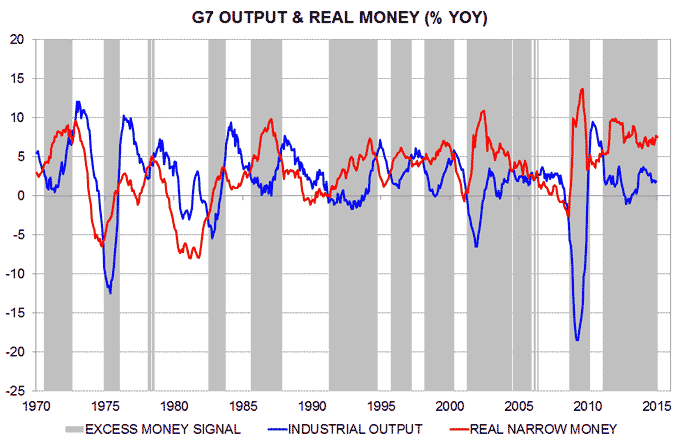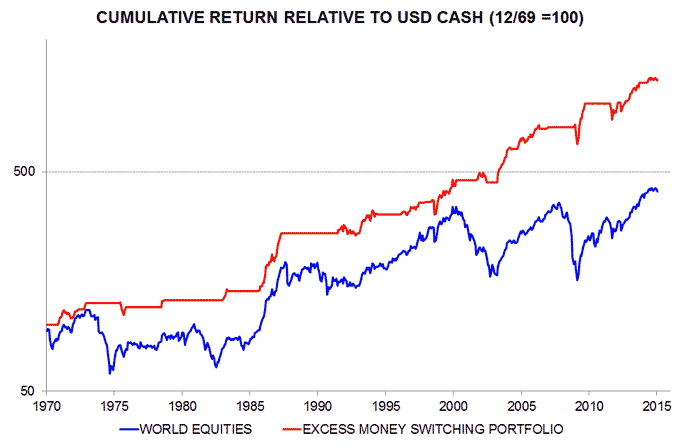Liquidity backdrop for markets still favourable
The MSCI World index of developed equity markets this week reached a new record in US dollar terms. The local currency version of the index had surpassed its previous high in early February. The continued strength of equity markets is consistent with the assessment here of a favourable global liquidity backdrop.
According to the “monetarist” forecasting approach, real money – i.e. the money stock divided by prices, or M / P – leads the economy, while “excess” money – i.e. real money divided by output, or M / (P*Y) – leads financial markets. The latter idea suggests that equity markets will do well when real money is growing faster than output.
The first chart shows annual growth rates of G7 industrial output and real narrow money since 1970. Shaded areas mark periods when real money was growing faster than output, i.e. excess money was rising. The monetarist approach implies that equities should have performed more strongly during these periods.
This was the case. From the start of 1970 to the end of 2014, the MSCI World US dollar index returned a cumulative 314% more than US dollar cash (i.e. three-month eurodollar deposits). Investing in equities only when G7 excess money gave a positive signal would have boosted the excess return to 913%. By implication, equities underperformed cash on average during non-shaded periods.
The second chart compares the cumulative return relative to cash of buying-and-holding equities and a switching portfolio based on G7 excess money*. The maximum relative return drawdown of the switching portfolio in the historical data is 18% versus 56% for equities.
The annual growth rates of G7 real narrow money and industrial output were 7.3% and 1.7% respectively in November, the gap having widened since end-2013. A correction in markets is possible at any time but the liquidity backdrop remains supportive.
*The switching rule incorporates lagged as well as current excess money.



Reader Comments